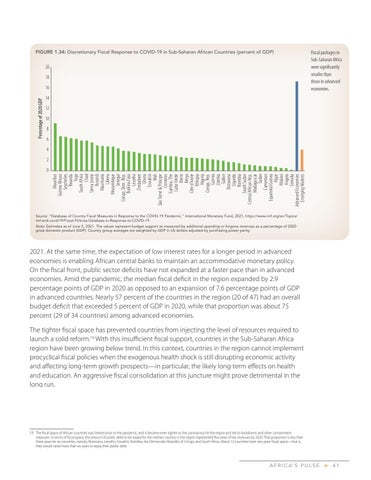FIGURE 1.34: Discretionary Fiscal Response to COVID-19 in Sub-Saharan African Countries (percent of GDP)
20 18
Percentage of 2020 GDP
16
Fiscal packages in Sub-Saharan Africa were significantly smaller than those in advanced economies.
14 12 10 8 6 4 2 Mauritius Guinea-Bissau Seychelles Rwanda Togo South Africa Chad Sierra Leone Burundi Mauritania Liberia Mozambique Senegal Congo, Dem. Rep. Burkina Faso Lesotho Zimbabwe Ghana Eswatini Mali São Tomé & Príncipe Comoros Gambia, The Cabo Verde Benin Kenya Côte d'Ivoire Ethiopia Nigeria Congo, Rep. Guinea Zambia Gabon Botswana Uganda Namibia South Sudan Central African Rep. Madagascar Sudan Cameroon Equatorial Guinea Niger Malawi Angola Somalia Advanced Economies Emerging Markets
0
Source: “Database of Country Fiscal Measures in Response to the COVID-19 Pandemic,” International Monetary Fund, 2021, https://www.imf.org/en/Topics/ imf-and-covid19/Fiscal-Policies-Database-in-Response-to-COVID-19. Note: Estimates as of June 5, 2021. The values represent budget support as measured by additional spending or forgone revenues as a percentage of 2020 gross domestic product (GDP). Country group averages are weighted by GDP in US dollars adjusted by purchasing power parity.
2021. At the same time, the expectation of low interest rates for a longer period in advanced economies is enabling African central banks to maintain an accommodative monetary policy. On the fiscal front, public sector deficits have not expanded at a faster pace than in advanced economies. Amid the pandemic, the median fiscal deficit in the region expanded by 2.9 percentage points of GDP in 2020 as opposed to an expansion of 7.6 percentage points of GDP in advanced countries. Nearly 57 percent of the countries in the region (20 of 47) had an overall budget deficit that exceeded 5 percent of GDP in 2020, while that proportion was about 75 percent (29 of 34 countries) among advanced economies. The tighter fiscal space has prevented countries from injecting the level of resources required to launch a solid reform.19 With this insufficient fiscal support, countries in the Sub-Saharan Africa region have been growing below trend. In this context, countries in the region cannot implement procyclical fiscal policies when the exogenous health shock is still disrupting economic activity and affecting long-term growth prospects—in particular, the likely long-term effects on health and education. An aggressive fiscal consolidation at this juncture might prove detrimental in the long run.
19 The fiscal space of African countries was limited prior to the pandemic, and it became even tighter as the coronavirus hit the region and led to lockdowns and other containment measures. In terms of fiscal space, the amount of public debt to be repaid for the median country in the region represented five years of tax revenues by 2020. That proportion is less than three years for six countries, namely, Botswana, Lesotho, Eswatini, Namibia, the Democratic Republic of Congo, and South Africa. About 12 countries have very poor fiscal space—that is, they would need more than six years to repay their public debt.
A F R I C A’ S P U L S E
>
41

